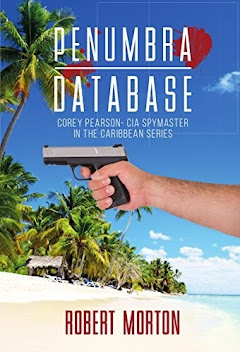 |
| Russian Spies Lurk in University Quantum Computer Labs |
If
you've read Quantum Shadows,
you know it's not your average spy thriller. It's gritty, modern, and smart—set
in the world of quantum computing, encrypted data, and suspicious-looking
professors who know a bit too much. But here’s the twist: the spycraft in the
story isn’t just clever fiction. Much of it is rooted in how real-life CIA
operatives do their work every day, especially in today's tech-saturated,
campus-driven world.
Take the lead characters—Corey, Ana, and
Brad. They're undercover at UC Berkeley, posing as a cybersecurity consultant,
a research assistant, and a low-key IT hire. This setup isn’t far off from
what’s known in intelligence circles as NOCs—non-official cover operatives.
These are CIA operatives who operate without diplomatic protections, which
makes them much harder to detect and much more vulnerable if caught. In real
life, NOCs have been embedded in everything from tech startups to think tanks
and, yes, even universities.
This kind of deep cover was spotlighted
back in 2010 during the FBI’s takedown of a Russian spy ring known as Operation
Ghost Stories. One of the most infamous agents, Anna Chapman, lived an entirely
fabricated life as a real estate agent in Manhattan. Glamorous, fluent in
multiple languages, and active in social circles, she was the perfect bait to
get close to influential targets. The others posed as analysts, writers, and
consultants, with some even cozying up to academia to gain access to sensitive intel
and people of influence. It was the spy world’s version of method acting—and they
pulled it off—until they got caught.
In Quantum Shadows, surveillance plays a big role, and not just the Hollywood kind. Ana and Brad monitor shady figures on campus, while Corey tails Ivanov’s handler through back alleys and cafés. Ivanov, a visiting Russian scholar posing as a collaborator in a quantum lab, is suspected of orchestrating a covert data exfiltration network. It’s subtle, deliberate, and absolutely real. In real-world operations, CIA counterintelligence operatives deploy layered surveillance techniques—what they call “static and mobile”—to track foreign agents or suspected moles. These officers are trained to spot behavioral anomalies, use surveillance detection routes, and even monitor encrypted network traffic.
The Robert Hanssen case is a prime example
of why counter-surveillance matters. Hanssen, an FBI agent turned traitor, sold
U.S. secrets to the Russians for over 20 years before being caught. How?
Surveillance. They tracked him physically, digitally, and psychologically,
eventually catching him red-handed during a dead drop exchange. That kind of
precision and patience is exactly what you see echoed in Quantum Shadows—just
swap the park bench for a Berkeley café and the envelope for a flash drive.
But perhaps one of the most chillingly
realistic elements in the story is how foreign agents target ambitious students
and faculty through soft recruitment. A little flattery, a tempting research
grant, a job opportunity abroad—it all sounds innocent until it’s not.
In the real world, adversaries like Russia
and China use what's known as the MICE model—Money, Ideology, Coercion, and
Ego—to lure recruits. Grad students, especially those working in cutting-edge
fields like AI or quantum encryption, are prime targets. Why? Because they’re
brilliant, underfunded, and often completely unaware of the intelligence game
being played around them. Read: The MICE Method: How the CIA Persuades People to
Betray Their Country
China’s Thousand Talents Program is a
real-world example of this in action. Launched to recruit global scientific
expertise, it often offered U.S. researchers lucrative contracts in exchange
for sharing proprietary technology—sometimes without fully disclosing ties to
the Chinese government. One high-profile case involved Dr. Charles Lieber, the
former Chair of Harvard’s Chemistry Department, who was convicted in 2021 for
lying about his ties to the program and receiving secret payments while working
on federally funded research. And the CIA, along with the FBI, has been
sounding the alarm louder each year: academia is now a front line in the war
over emerging technologies.
That’s what makes Quantum Shadows feel so
real. It doesn’t just get the tone and stakes right—it nails the tradecraft.
The quiet tension of cover identities. The creeping realization that
surveillance is a two-way street. The psychological manipulation at the heart
of every recruitment attempt. It’s all there, grounded in actual field methods
used by today’s intelligence professionals.
And maybe that’s what makes spy fiction
like Quantum Shadows so compelling—it doesn’t just entertain. It gives
us a glimpse into the invisible wars happening right under our noses. Wars
fought not with tanks and missiles, but with flash drives, fake résumés, and
whispered conversations over lattes on a university quad.
So next time you’re on campus and someone
seems just a little too interested in your research… maybe take a second look.
Robert Morton is a member of the Association of Former Intelligence Officers (AFIO) and an accomplished author. He writes the Corey Pearson- CIA Spymaster Short Story, blending his knowledge of real-life intelligence operations with gripping fictional storytelling. His work offers readers an insider’s glimpse into the world of espionage, inspired by the complexities and high-stakes realities of the intelligence community.





No comments:
Post a Comment